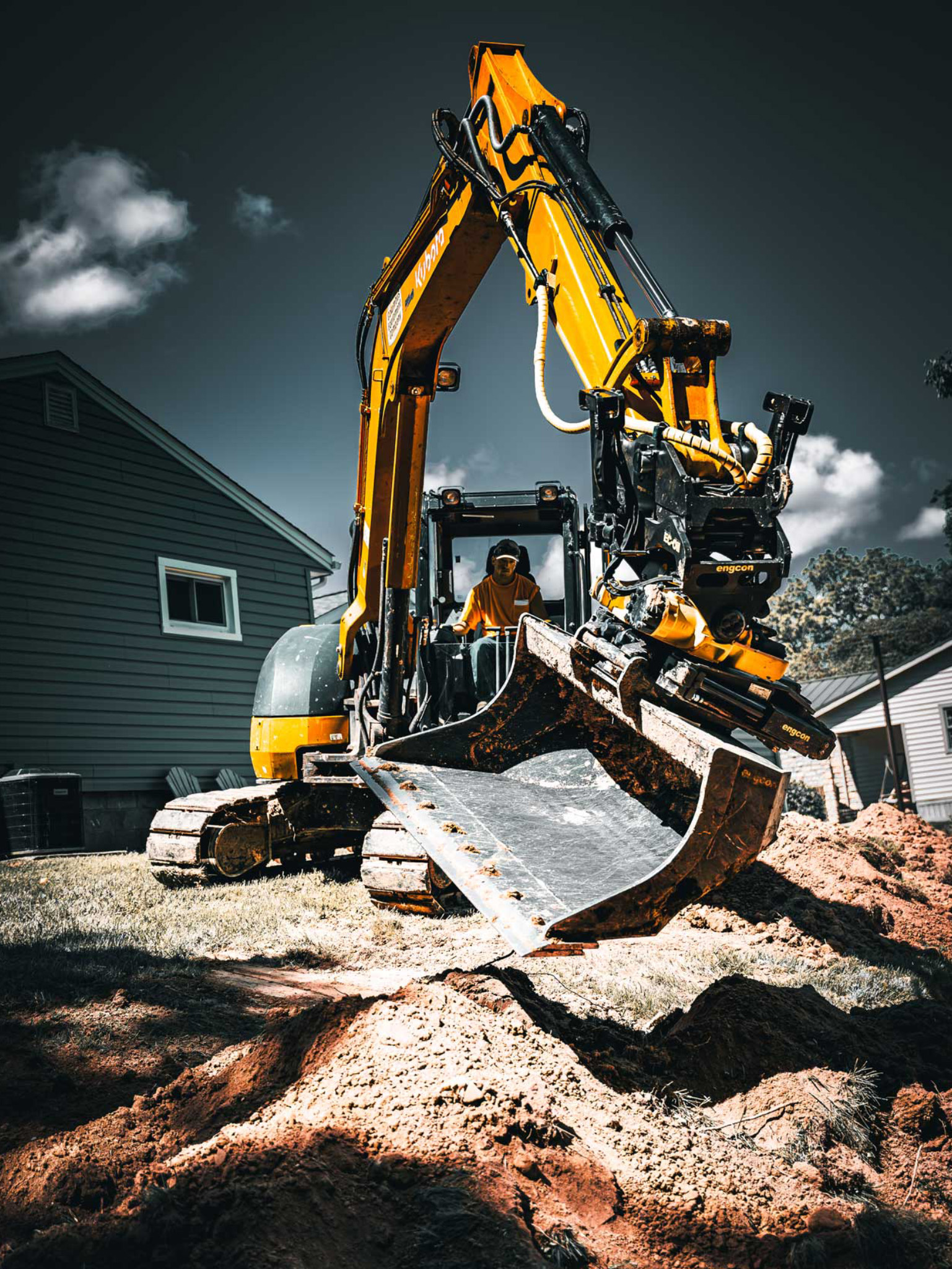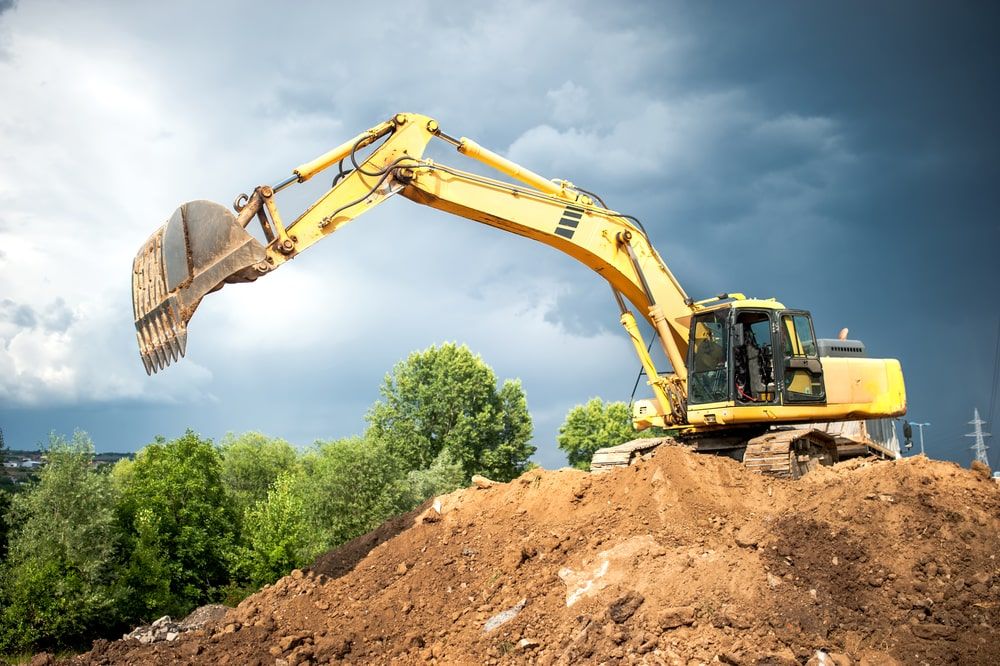Unveiling the Art of Excavation: Pro Tips for Safe and Effective Digging
As dirt is turned and planet is moved, the details of excavation expose themselves, requiring a keen understanding of equipment, soil structure, safety and security protocols, and ecological considerations. The experience needed to browse these elements effectively can suggest the difference in between a successful excavation project and a prospective calamity.
Importance of Appropriate Tools
To make certain the safety and security and efficiency of any type of excavation task, utilizing the ideal devices is extremely important. The right devices not only boost efficiency yet likewise reduce dangers linked with excavating. Excavation jobs differ in range and intricacy, ranging from little property landscaping tasks to large building tasks. No matter the project dimension, having the right equipment can make a significant distinction in the end result.
These functional makers come in different dimensions to fit different job requirements. Miniature excavators are optimal for smaller tasks, while bigger excavators tackle extra substantial projects successfully.
Besides excavators, various other vital equipment consists of dump trenchers, vehicles, and excavators. Dispose vehicles are necessary for removing and moving excavated materials, while plates are used for digging narrow and deep trenches. Bulldozers master tasks that need pushing huge quantities of soil or debris. By spending in the appropriate tools, excavation projects can be completed safely, on time, and with precision.
Understanding Soil Structure
A thorough grasp of soil structure is basic for performing excavation jobs with accuracy and safety and security. Understanding the different kinds of dirt is important as it straight influences excavation approaches, equipment choice, and total task performance. Soil composition usually consists of four major elements: sand, silt, clay, and raw material. Each part has special residential properties that influence just how dirt responds to excavation procedures.
Silt bits are smaller sized than sand however larger than clay, supplying moderate drain and communication. Organic matter, such as decaying plant product, impacts soil fertility and stability.
Before starting excavation, carrying out soil examinations to identify its composition and features is crucial. This details assists in picking the proper tools, applying security actions, and establishing excavation strategies tailored to the details dirt problems - lancaster excavation. By understanding dirt make-up, excavation specialists can enhance project results while guaranteeing safety and security and adherence to finest techniques
Precaution and Protocols
Recognizing soil make-up is the keystone upon which precaution and protocols for excavation tasks are developed, making sure the health of employees and the success of the endeavor. There are a number of crucial procedures that need to be applied to minimize dangers and protect against accidents. when it comes to safety during excavation.
Primarily, prior to any digging commences, a complete inspection of the site ought to be carried out to recognize any kind of possible threats such as below ground utilities, unstable soil conditions, or close-by structures that could posture a threat. It is crucial to have a skilled individual oversee the excavation procedure to make sure that all safety and security methods are adhered to purely.
In addition, all employees involved in the excavation should be effectively trained in safe excavating practices and the appropriate operation of tools. By this article sticking to these security procedures and protocols, excavation tasks can be completed effectively and without occurrence.
Effective Excavation Preparation
When getting started on an excavation task, thorough planning is vital to guarantee efficiency, safety and security, and effective results. Effective excavation planning includes several vital steps that are vital for the smooth execution of the job. The first step is to perform a thorough site analysis to identify any kind of prospective hazards, such as below ground utilities or unstable dirt conditions. This information is vital for creating a comprehensive excavation plan that consists of safety actions and run the risk of reduction techniques.
As soon as the site evaluation is full, the next step is to develop a clear timeline and schedule for the excavation activities. This consists of determining the sequence of jobs, tools requirements, and workforce allowance. Correct scheduling assists stay clear of hold-ups and guarantees that the job remains on track.

Moreover, communication among all employee is critical throughout the planning stage. Clear instructions, regular updates, and reliable sychronisation are important for an effective excavation project. By investing time and effort in thorough planning, excavation groups can considerably enhance productivity, minimize threats, and achieve successful outcomes.

Taking Care Of Environmental Considerations
With raising emphasis on ecological sustainability in building practices, handling environmental factors to consider has come to be a crucial aspect of excavation tasks. Excavation tasks have the possible to influence the surrounding atmosphere via soil disintegration, sediment overflow, environment disturbance, and contamination of water resources. To reduce these risks, it is important to apply best techniques that prioritize environmental management.

Additionally, proper waste management is crucial to stop soil and water contamination. Applying procedures for the disposal of harmful products, recycling of waste materials, and reducing making use of damaging chemicals can considerably decrease the environmental impact of excavation projects. By integrating these practices into excavation planning and implementation, construction official website business can make visit this site sure that their tasks are not only risk-free and efficient but additionally eco accountable.
Verdict
Finally, grasping the art of excavation requires a thorough understanding of correct equipment, dirt make-up, precaution, and reliable planning. By complying with these guidelines and thinking about ecological elements, excavations can be performed securely and efficiently. It is essential to focus on security and productivity in every excavating job to ensure successful end results.
As soil is transformed and earth is moved, the details of excavation expose themselves, demanding an eager understanding of tools, soil structure, safety and security protocols, and ecological considerations.To make sure the safety and effectiveness of any excavation job, making use of the appropriate equipment is extremely important.A comprehensive understanding of dirt composition is basic for executing excavation tasks with accuracy and safety. Recognizing the various types of soil is essential as it straight influences excavation approaches, equipment choice, and total project efficiency. By understanding soil structure, excavation specialists can enhance project results while making certain safety and security and adherence to finest techniques.